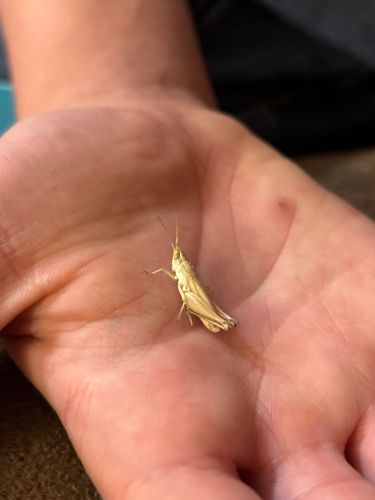Slender Meadow Katydid
Scientific Name: Conocephalus fasciatus
Order & Family: Order: Orthoptera, Family: Tettigoniidae
Size: Typically 12-25 mm (0.5-1 inch) in body length, excluding antennae.

Natural Habitat
Slender meadow katydids are commonly found in meadows, tall grasslands, agricultural fields, gardens, and along roadsides. They prefer areas with dense vegetation for camouflage and food.
Diet & Feeding
They are primarily herbivorous, feeding on various grasses and other low-lying vegetation. They can also occasionally consume small insects or pollen.
Behavior Patterns
Slender meadow katydids are typically active, especially at night when they often sing. Males create a distinctive, buzzing song by rubbing their wings together to attract females. They are known for their jumping ability to escape predators.
Risks & Benefits
Generally, slender meadow katydids pose no risk to humans. In large numbers, they can cause minor damage to crops or garden plants, but this is rare. Ecologically, they serve as a food source for birds, small mammals, and other insects, contributing to the food chain. They also play a role in nutrient cycling by consuming plant matter.
Identified on: 8/14/2025